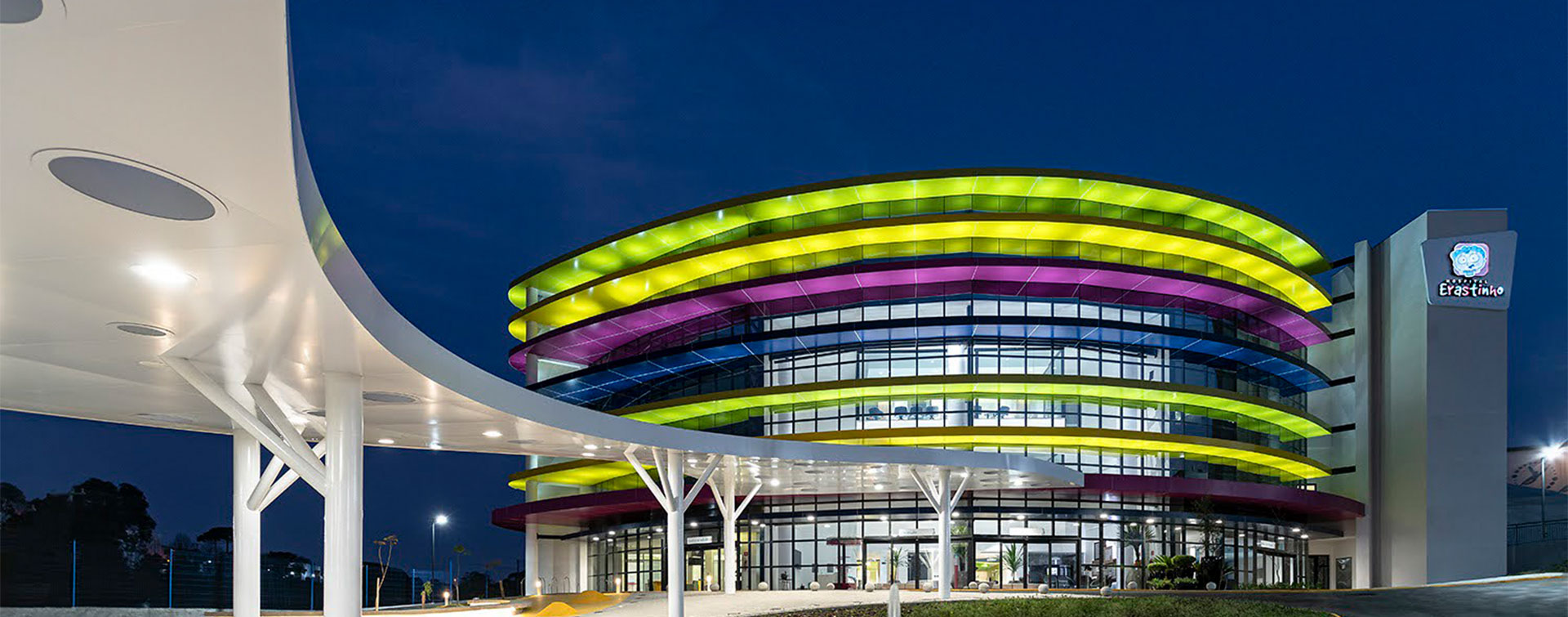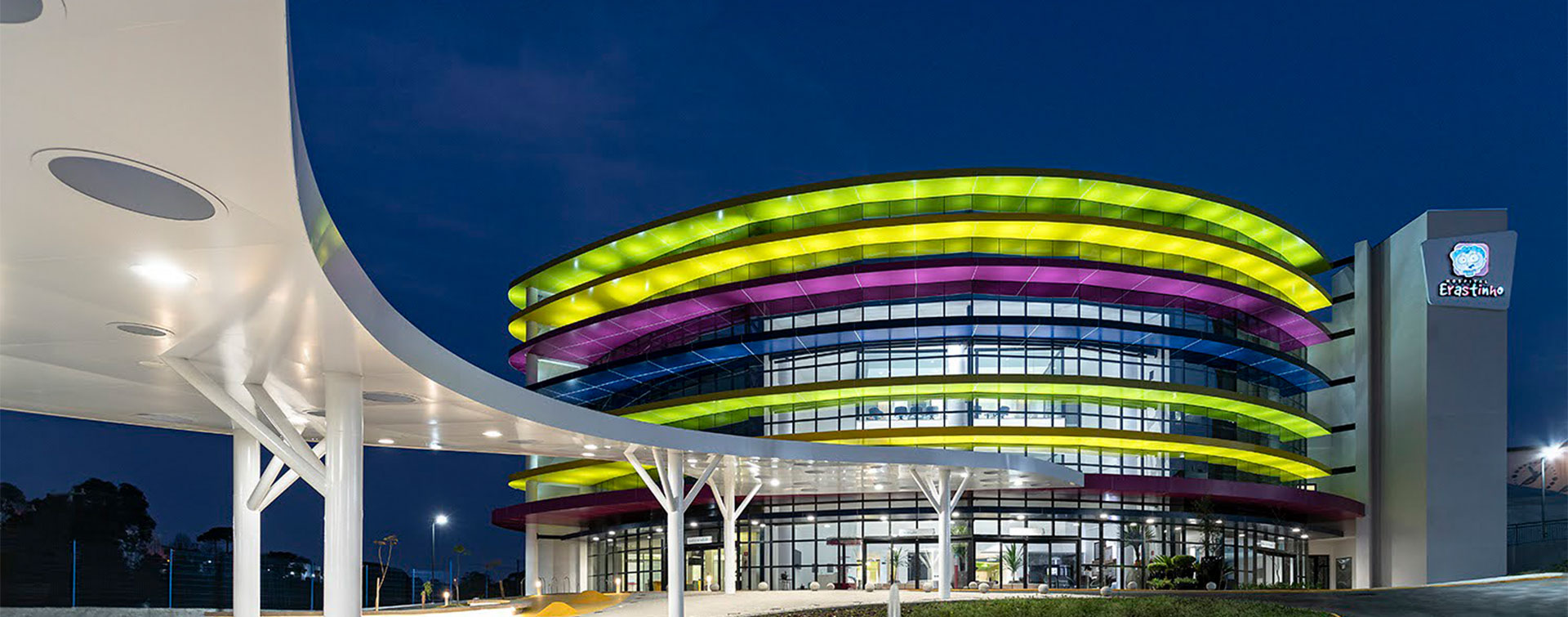 8 min
8 min
With a climate footprint accounting for 4.4% of CO₂ emissions worldwide, the hospital sector currently faces an unprecedented challenge: that of its own transformation. And the equation is complex. How to upgrade buildings that are subject to stringent standards, that operate 24 hours a day, and that must keep working at all times? How can energy savings be reconciled with increasingly demanding health requirements? How to transform without disruption, to renovate without impact on the quality of care?
A hospital that is adapting: modularity as the solution to future challenges
As the health crisis demonstrated, the ability to adapt has become vital for healthcare establishments. Faced with constantly changing needs – new medical practices, technological innovations, emergency situations – hospitals can no longer afford to be set in their ways. Modularity is emerging as the architectural answer to this need for agility.
This new approach is transforming the very design of hospital facilities. Out with compartmentalized departments and rigid structures. In with adaptable technical platforms, scalable healthcare units and redesigned walkways to optimize the flow of patients and caregivers.
The future university hospital in Nantes (France) is a perfect example of this new vision of the hospital. Scheduled to open in 2027, the hospital’s indoor layout is flexible and can be reconfigured to meet changing needs: a conventional ward can be rapidly transformed into an intensive care unit, and dedicated circuits created in the event of a crisis. This approach anticipates future needs while optimizing the resources available today.
And this flexibility is not limited to simply reconfiguring spaces. It relies on innovative technical solutions: high-performance movable partitions, adaptable ventilation systems, technical networks that can be easily upgraded. This challenge has been met using materials specifically developed for the medical sector, combining adaptability and compliance with the most stringent health standards. For example, plasterboard designed to improve indoor air quality by permanently removing formaldehyde in the air. In the hospital environment, the plasterboard can also withstand intensive cleaning protocols.
Energy retrofitting of hospitals: towards smart, low-energy buildings
Energy is a thorny issue for hospitals. With medical equipment running 24 hours a day, a constant need for heating and air conditioning, and high water consumption linked to strict hygiene requirements, energy bills are soaring – and so are CO₂ emissions. Against this background, hospitals are opening up to change.
In Brussels (Belgium), the Saint-Luc university clinics are leading the way. Certified as an “eco-dynamic company” by Bruxelles Environnement, they exceed current energy performance standards for buildings in Belgium. Among the solutions at the core of this performance: an ultra-efficient thermal envelope, low-carbon materials, and an optimized medical water management system. Proof that health and ecological requirements can sit side by side.
Digital innovations are also redefining hospital energy management. Lille university hospital in France is an inspiring example. With its 500,000 m² of floor space and 3,300 beds, this veritable “city within a city” has undertaken a complete overhaul of its electrical infrastructure. The hospital opted for Schneider’s smart monitoring solution, Power Monitoring Expert. This system analyzes energy flows in real time to optimize their management according to occupancy and seasonal variations. The result is better control of consumption without compromising continuity of care, and the ability to detect and deal with malfunctions quickly.
Quality of the hospital environment: a key factor in patient well-being
The hospital environment has a direct influence on patient recovery and the effectiveness of healthcare professionals. Noise, air quality and thermal comfort are all therapeutic levers in their own right.
These challenges call for a holistic approach to comfort. Acoustic treatment becomes a priority, with innovative solutions incorporated as from the design stage. Sound-absorbing ceilings, insulating partitions and shock-absorbing floors all contribute to creating areas conducive to rest and concentration.
Particular attention is paid to air quality, another major issue, through controlled ventilation and the choice of materials with low CO2 emissions. Natural light and smart lighting management help create a soothing atmosphere that respects the body clock.
The Erastinho pediatric hospital in Brazil is a perfect example of this new approach to healthcare through the environment. The first in Latin America to achieve Gold certification from LEED Healthcare – an international standard that validates the highest environmental performance in the healthcare sector – this hospital stands out for its biophilic approach, which places nature at the heart of its architecture: a greened roof, use of bio-sourced materials, and natural light everywhere.
The result is an environment that supports the recovery process while providing a pleasant working environment for caregivers.
This integrated design also meets the practical requirements of the hospital environment, with easy-to-clean surfaces, precise temperature control and adaptability to specific departmental needs
Innovation as a catalyst: towards global renovation
The transformation of healthcare establishments can no longer be confined to one-off projects. A systemic approach is needed, where every component, from materials to patient pathways, is rethought with intelligence and with sustainability in mind. One advanced technology follows another, reshaping the healthcare establishment of the future.
The building envelope is the first area of innovation. Smart façades, high-performance glazing and new-generation acoustic laminates are setting new standards. The Beroun psychiatric hospital in Czechia illustrates this trend. Built in 2022-2023, this facility, which accommodates 300 professionals and over 200 patients, has been fitted with 6,500 m2 of latest-generation pre-insulated ventilation ducts which, in addition to their energy performance, guarantee optimum acoustic comfort – a crucial issue in an environment where tranquility is part of the therapy.
These advances in materials are matched by equally innovative implementation methods, as demonstrated by Amsterdam UMC (Netherlands). To maintain continuity of activity during renovation work, the establishment opted for off-site construction of partitions in kit form. Delivered from the roof as work progressed, so as not to disrupt the flow of patients, each kit contained plasterboard already cut to size to meet the needs of each room. This ingenious approach reduced noise and dust on the worksite. The result was a 40% increase in productivity and a 10-15% reduction in CO₂ emissions per square meter installed.
The transformation of healthcare establishments thus goes far beyond the scope of simply bringing them up to standard. A in-depth transformation is under way, combining technical innovation and changing practices. The hospital of the future will be a public health stakeholder in its own right, with more flexible facilities, lower energy consumption and a more human approach. An ambitious project at the meeting point of technology, architecture and healthcare.
See also:
Health and well-being: a challenge for sustainable construction









